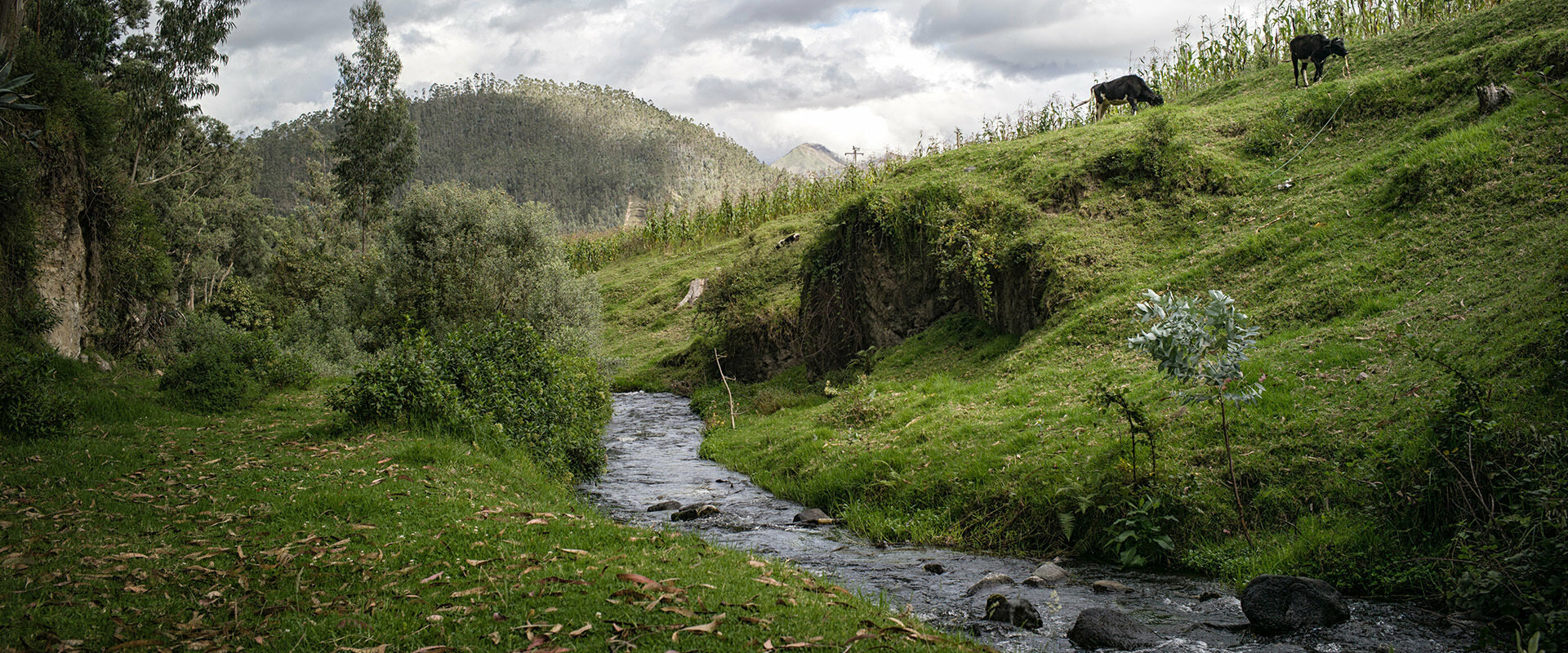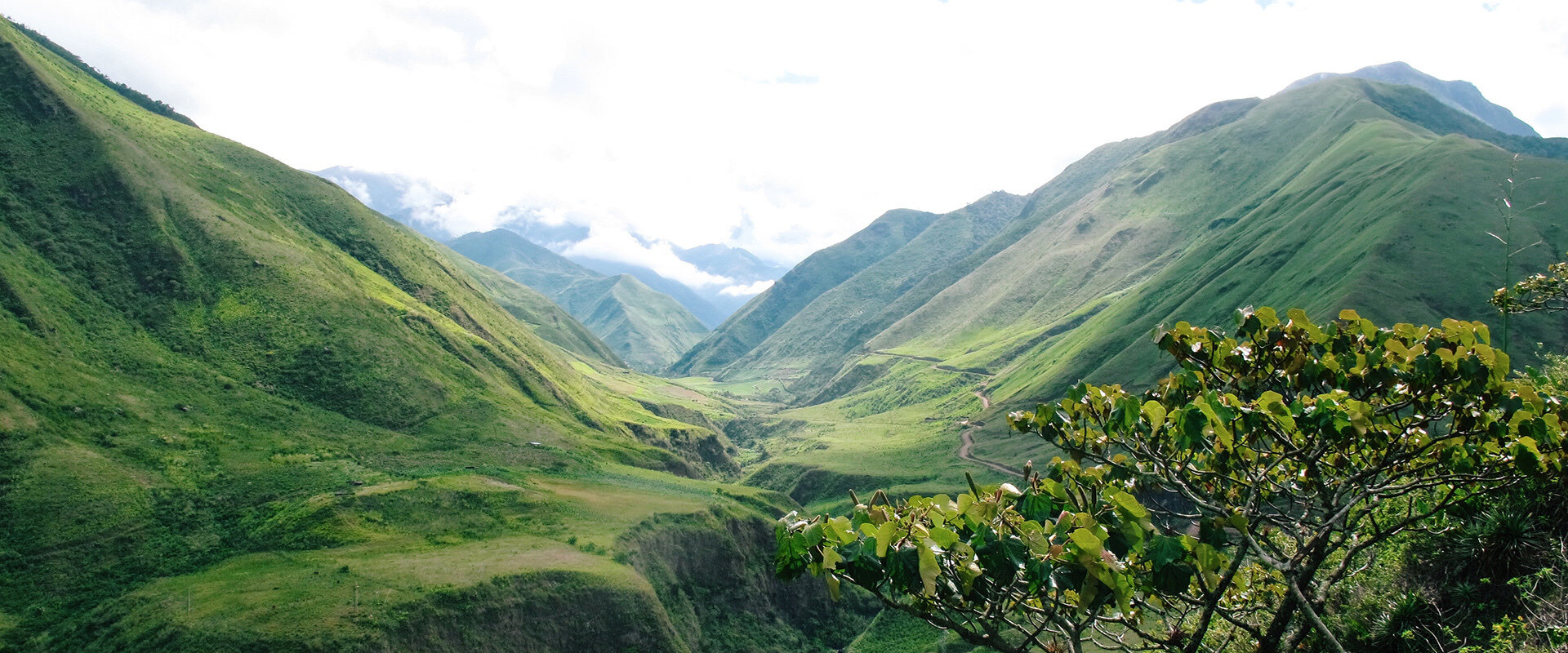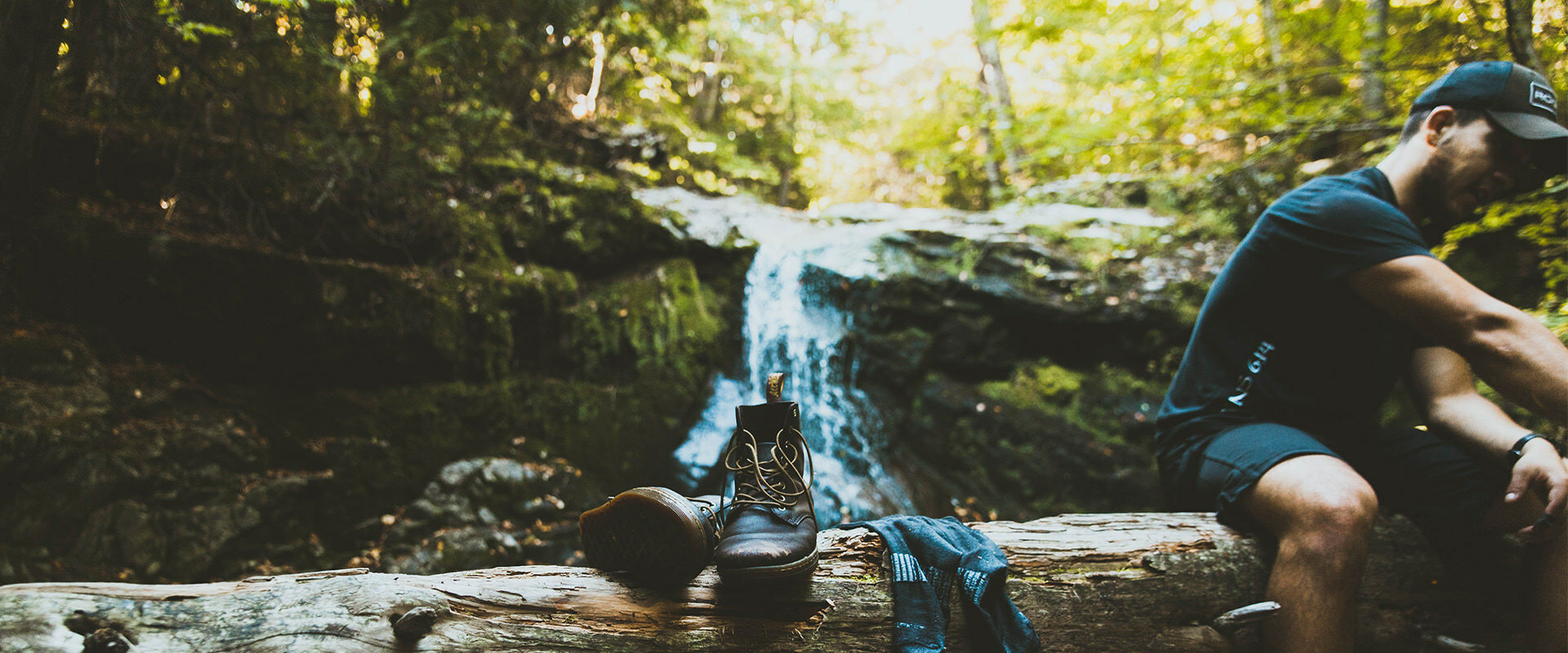Getting lost in Ecuador’s Valley of Longevity
My feet are soaked and cold. Mountain river water rushes past my bare shins. First the water temperature is a shock. Then, my skin feels slightly numb. Smack dab on the equator, Ecuador has a reputation for its warm climate but make no mistake: its mountain streams run icy cold. In this moment, as I stand in frigid waters, I’m accompanied by a band of hostel friends. It’s the afternoon of New Year’s Eve and we’re on a hike towards a waterfall in the mountains. I’m standing in a river because moments ago, a local man who has adopted us told me that walking through the river is the best route. My reluctant friends have yet to follow in my footsteps. Then, on a whim, this impish Ecuadorian changes his mind. The river route is way too rough, he says. He knows an easier way. I try not to roll my eyes wishing he had thought of this significant detail before.
Fifteen minutes earlier, this man caught us on the trail and advised us to turn around. Sure, we were on the most straightforward route but he knew a better way—one that promised much more beautiful scenery. We took his advice and now, I climb back onto solid ground, my shoes making a slush-sloshing squeak and gathering dirt as I walk. We turn around a second time. Five minutes later, we halt: a stubborn donkey is blocking our path. So far, trusting this man hasn’t served us well at all.
I’m in this town called Vilcabamba which is in the section of the country that dips down towards Peru. For many backpackers, Vilcabamba is the last stop before crossing the border. But that’s not its best claim to fame. Dubbed the Valley of Longevity, Vilcabamba is a mysterious town in this Andean nation where inhabitants have some of the longest lifespans in the world. It's the subject of local lore as many contemplate what it is about the valley that tacks on decades of life for its people. Those who live in this spot are resilient and strong. Their bodies stand the test of time. There are few other places in the world that have this same brand of magic—Ikaria, Greece; Nicoya, Costa Rica; and Okinawa, Japan are just a few. A 1973 National Geographic article exploring the world’s oldest populations made this small green village famous. It was once known as a “blue zone”—the term given to rare longevity hotspots. That title doesn’t still stand, but its reputation does. For people here, growing old takes time… a lot of it.

It seems fitting to mark the passage of time in a town famous for people whose bodies seem to defy it.
After hearing many whisperings about Vilcamba, I showed up myself. I arrived days before Christmas last year. Immediately, I clicked with other travellers in my hostel. Our origins spanned three continents yet we seemed to share a sense of humour. I stayed until the new year. In retrospect, it seems fitting to mark the passage of time in a town famous for people whose bodies seem to defy it. In the moments before the calendar year turned over, I was lost in the mountains that hug the town.
After the river and donkey incidents, I grew skeptical of our “guide.” We had wasted a lot of time doubling back on the trail and he didn’t seem to know what he was talking about. He pointed up towards the top of the mountain and gave us a set of vague directions: something about a gate, something else about a yellow cottage, we were to keep an eye out for horses and then the grand finale—the waterfall—would appear. He gave us time estimates for each section of the trail. Then he bowed out and left.
I wasn’t the only hesitant one in the group. We started up a steep side of the mountain and more than one friend questioned if we were absolutely sure we were going the right way. We hoped we weren’t going up these leg-wrecking slopes for nothing but none of us were certain. We kept our eyes peeled for a gate that didn’t appear. We trudged on knowing that if we had stuck to the original trail, we would have reached the waterfall by now. On this route, we weren’t sure if—or when—we’d reach it. One of us joked that we should kiss our New Year’s Eve plans goodbye. Conversation turned to repeatedly questioning our route: Did we miss a turn? Is this even the right trail? Should we have just followed the river?

At this rate, our simple two-hour hike on the afternoon before the big New Year’s Eve party was likely to take at least double the time.
Then... we spotted it. The rocky dirt trail curved around the mountain and there, in the trees, stood a wire gate. We were gobsmacked because first of all, we didn’t think we’d actually find it, and secondly, his time estimates were grossly inaccurate. It had taken us three times as long as he said it would to get to this point. At this rate, our simple two-hour hike on the afternoon before the big New Year’s Eve party was likely to take at least double the time. Don’t get me wrong: I’ll take a hike in the mountains any day but not having reliable directions or time predictions was frustrating both for me and my friends. We regretted taking that man’s advice.
The view from the ridgeline was pretty, that much was undeniable. Standing there, the surrounding scene was postcard perfect. The dirt trail cut through lush plants and bright green peaks towered over the river valley below. It took my breath away, though that could have been because I was still climbing. That path, sandy and parched from the blazing afternoon sun, wormed through some bushes and then over a small ledge. We began to descend when I saw a small, yellow cottage. I wondered what kind of family lived here in the middle of uneven Andean terrain, so far from the town. In the distance, I could see a few horses chilling just off to the side. As I was thinking about this family and what their lifestyle must be like, it hit me: the yellow cottage and the horses—we had reached the point that man spoke of!

Barely able to believe that his advice actually materialized, we continued towards the house. After hopping over a small stream, we reached it and its inhabitants greeted us with glasses of cold water. We had one final destination: the waterfall. And I could already hear its powerful roar just beyond. We trekked past four horses lazily eating grass in the field and began the downward climb. It wasn’t more than a few minutes before I saw it. The water tumbled over a steep, rocky ledge into a pool below. Along the wall’s edges hung a jumble of green vines and mossy plants. The mist off the falls made this rockface the perfect place for them to grow.
I reached the bottom, stripped down to my bathing suit and started to wade towards the drumming waterfall. It was freezing and I mean absolutely knife-cold. I didn’t care though. An Austrian woman joined me and her laugh boomed louder that the water plummeting into this frigid pool. I took a deep breath and went for it wading right up to the falls and letting the freezing water cascade over my bare skin. It was bitter cold and thrilling. I hadn’t felt more alive.
In that moment, no one in the group was thinking about our New Year’s Eve plans, the trail or the hike back to the hostel. We didn’t bother stressing about the hours of walking ahead of us. On the way to the waterfall, I was convinced our hike had gone wrong and that we had made a mistake by listening to that man. In retrospect though, the casual confidence of that man and his advice paired with the unpredictability of our afternoon gave me insight into Vilcabamba and its glory.

Sure, that man was way off in his time predictions but that’s probably because he has never bothered to time it.
This is Ecuador’s Valley of Longevity and it’s a place where, unlike me, people don’t stress about the minutes of the day. They don’t have cortisol needlessly pumping through their bodies. There, lungs fill with fresh mountain air free of pollution. It’s where a trek along mountain ridges and uneven terrain is just your average walk leading many locals to be in impeccable condition. It’s where clean mountain rivers hydrate the community, avocados and oranges grow in their backyards and where a plunge into freezing waters is a relief from the sun’s rays. Sure, that man was way off in his time predictions but that’s probably because he has never bothered to time it. He doesn’t have to—he knows that there’s no need to rush. In fact, slowly wandering through a beautiful valley in Ecuador probably does more favours for the mind and body than much of what constitutes the North American way of life.
This wasn’t a hike gone wrong, it was a hike that gave me insight into the lifestyle of one of the world’s sturdiest populations. Wasn’t that why I came to Vilcabamba in the first place? Hours later, we rang in 2019 marking the end of another year. It’s possible that by then, I knew a little more about how to keep my own body strong and resilient with the continued passing of time.



